Have you ever looked into a cat’s eyes? They’re quite unique in that their pupils are narrow and vertical instead of circular. What about hearing a cat’s meow? The truth is cats don’t meow at one another, just at humans and other creatures. These are just a few things that make cats both mysterious and mesmerizing.
Ready to learn more? Here are 50 fascinating facts about cats you never knew you wanted to know.
They’re Faster Than You Think
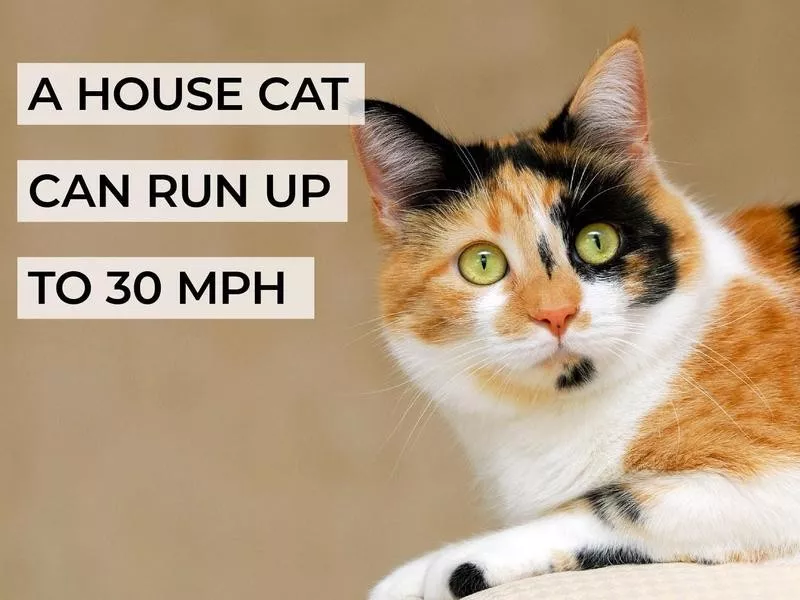
We knew jaguars were quick, but did you know that your very-own Whiskers can run as fast as 30 miles per hour?
You’ll See Tigers Doing Similar Things
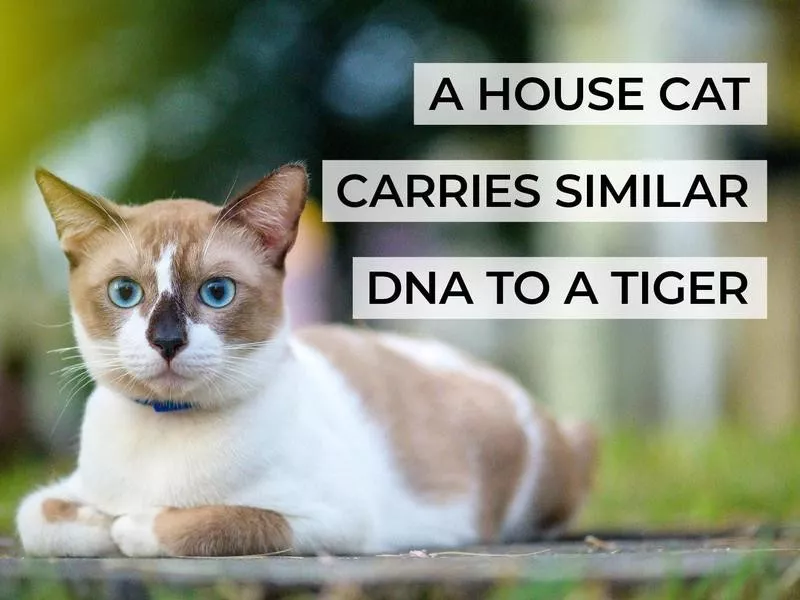
It’s true: A house cat’s genome is actually 95.6 percent tiger.
That’s why they share similar instincts as their jungle-loving relative. Scratching, pouncing and urine marking are all biological traits.
They Don’t Want Your Donut
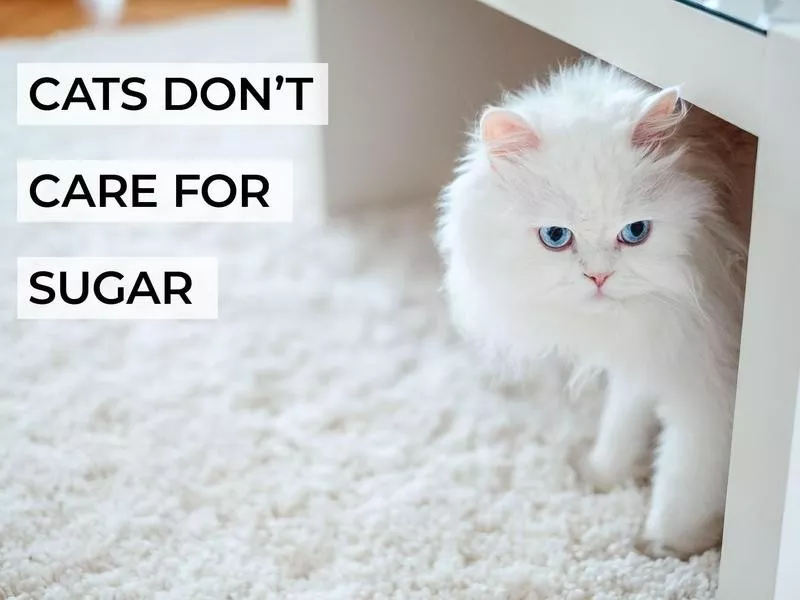
In fact, they’re known as being the only mammals who don’t taste sweetness.
So, forget that birthday cupcake for Ms. Fluffy.
They Are Very Springy!

That’s over 8 feet on average!
It’s because of the powerful muscles in their back legs that cats can jump up onto a table with such ease.
Cats Have Whiskers on Their Legs
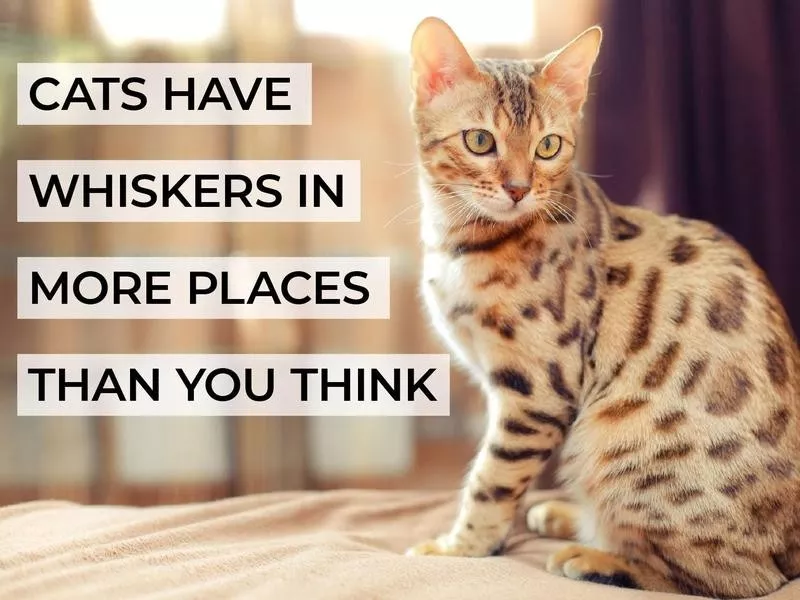
Cats typically have whiskers on both sides of their nose and on their upper facial lip, but did you know they also have them on their jaw line and even on the back of their front legs?
These whiskers connect to a cat’s sensitive muscular and nervous systems, acting as a sort of kitty radar that helps them detect and respond to changes in their surroundings.
Cats Can Become Teen Moms

So, just because your kitten is young and small doesn’t mean that you shouldn’t think about the possibility of them having kittens of their own sometime soon.
They Are Chatty

Just to give you a comparison, dogs only have 10.
The various forms of cat communication include postures, movement, noises and chemical signs.
Cats Only Meow at People

The only time a cat will meow at another cat is in the instance of a kitten to their mother.
So, when adult cats meow, they’re simply meowing at people.
Cats Self-Soothe

While purring can indicate when your cat is happy, cats also do it to cope with illness and stress.
In fact, the vibrations have been said to help an injured cat’s bones heal.
They Are Picky
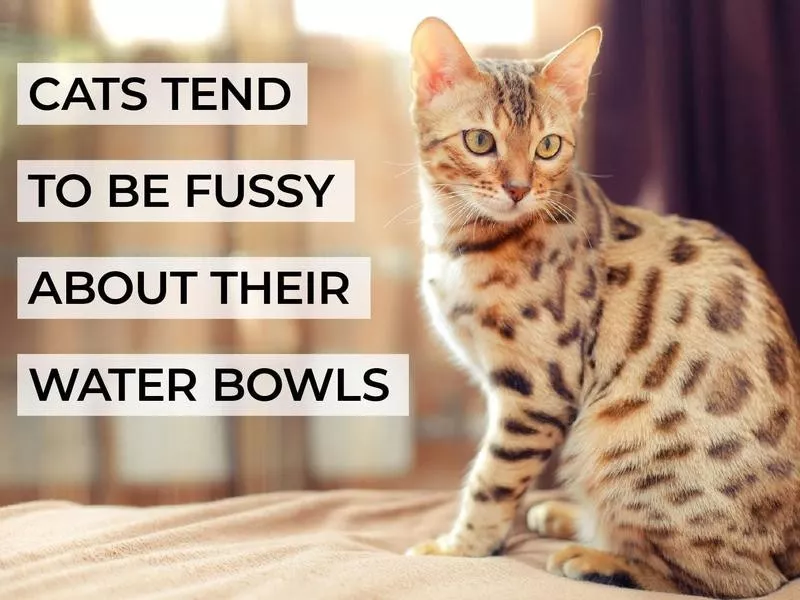
That means you may have to try different types of bowls until your cat is happy with one. Plastic tends to give off a weird smell, so stainless steel might work better.
Of course, some cats just like to drink directly out of the faucet.
Cats Are Destroyers!
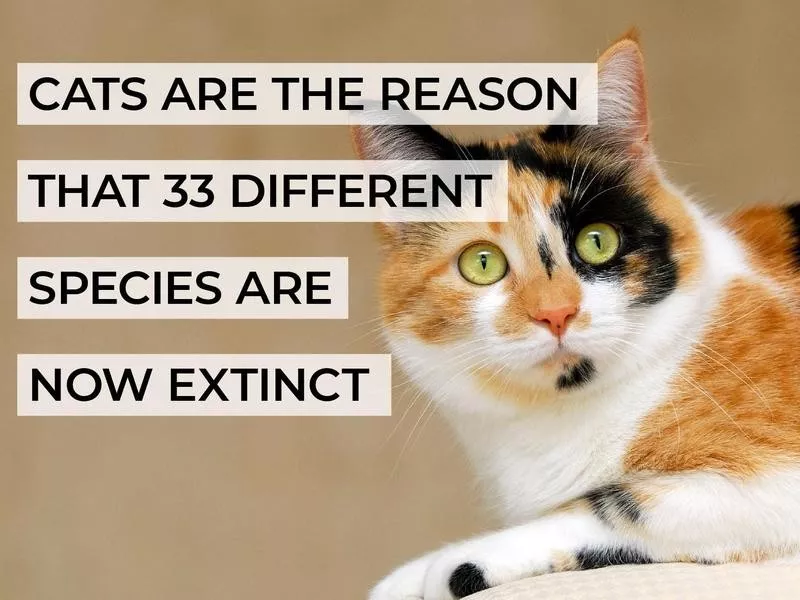
In fact, cats are believed to be one of the top threats to U.S. wildlife, killing billions of animals each year, including both birds and mammals.
So, watch out!
Cats Can Have Different Dads

This has actually been reported in humans, too, but is much rarer.
For cats, because a female is known to release multiple eggs over several days when she is in heat, there’s a lot more time for her to mate with varying partners.
They Have Allergies
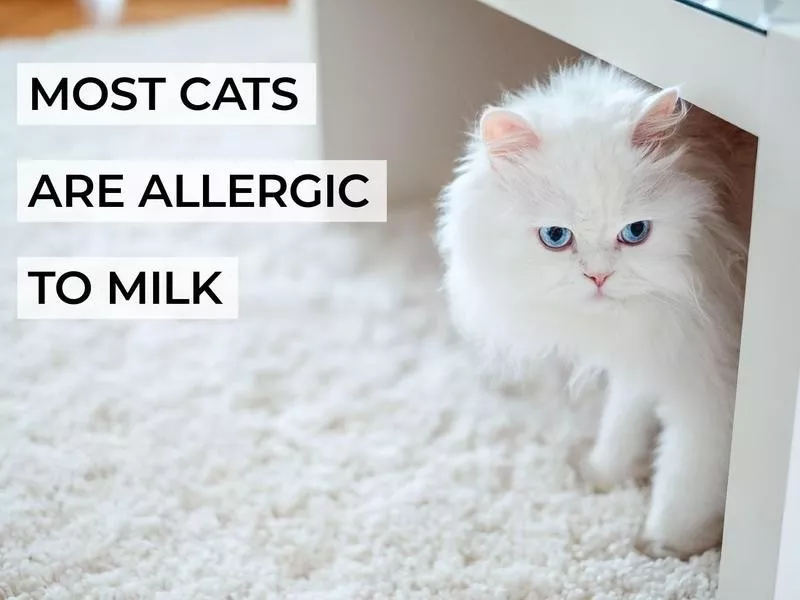
Want to feed that cat a bowl of warm milk?
Make sure to do so only if they’re a kitten because cats aren’t equipped to digest dairy unless they’re very, very young.
Cats Can Have Positions of Notoriety
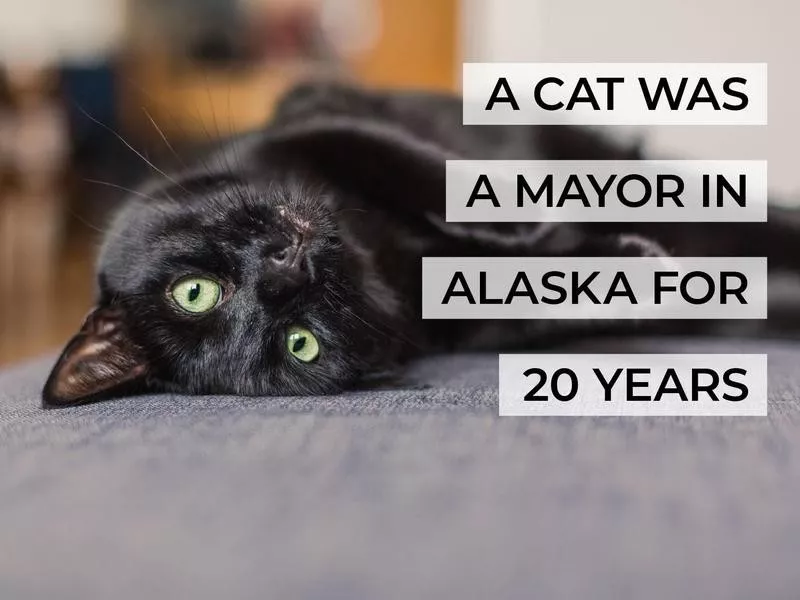
Stubbs, an orange tabby cat, was the mayor of Talkeetna, Alaska, from 1997 to 2017.
Of course, Stubbs’ position was only honory, as the town is simply a historic district with a population of just under 1,000 people.
They Sleep a Lot
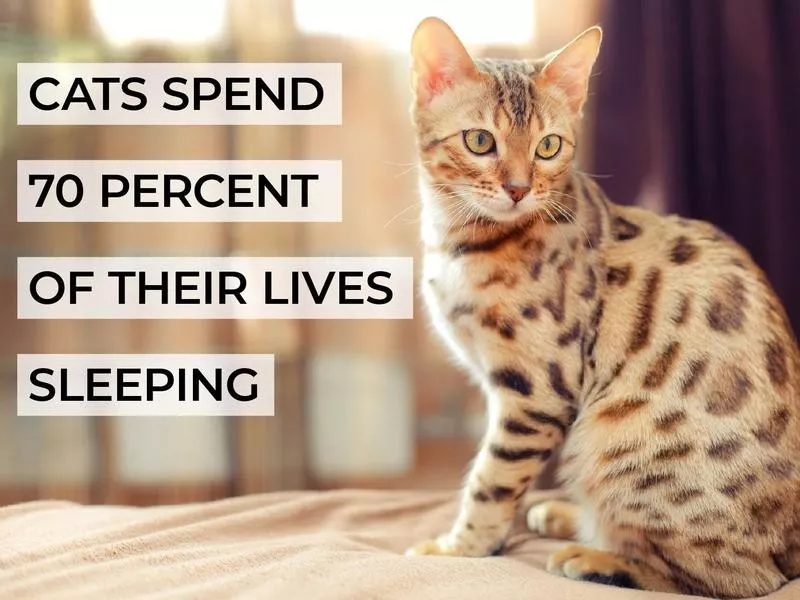
That’s right, if you’re feeling tired, be jealous of your pet cat that sleeps on average 13 to 16 hours a day.
Apparently, it’s called a “cat nap” for a reason.
They Can’t See Color

Cats can see shades of green and blue, but they can’t see shades of red.
Cats rely more on their senses of hearing and detecting motion than seeing details or color.
But They See More Than Humans

Cats can see about 200 degrees in their peripheral vision, while humans can only see 180 degrees.
This helps cats see more around them while they are hunting.
They Have a Unique Eye Shape

Ambush predators like cats and snakes are the animals most likely to have vertical pupils. Prey animals such as goats and sheep have rectangular, horizontal eyes.
Turns out, a vertical pupil is the best for maximizing judging distances, which makes the most sense for honing in on prey.
Their Eyes Have Mirrors

It’s not a mirror like what we have in our homes! But cats have a special feature behind their retinas, called a tapetum.
The tapetum acts like a mirror, catching the light that passes into the eye and reflecting it.
And Their Eyes Glow

The tapetum reflects the incoming light, allowing it to be picked up a second time. This is the reason cats’ eyes glow in the dark.
That efficient use of the light their eyes pick up helps them see better in low-light conditions where humans wouldn’t be able to see at all.
Melanin Determines Fur Color

Getty Images
Eumelanin produces shades of brown and black, while pheomelanin provides red and yellow coloring.
These two types of melanin can be present in different proportions, which determines the unique colors of each animal’s fur.
More Melanin Means Darker Fur

Getty Images
When cats have more melanin, their fur is darker. That means cats that have less melanin have lighter fur or different colors of fur, and if a cat has no melanin, they are albino.
However, an absence of melanin in cats doesn’t result in pink eyes like it does with most animals that have albinism. Melanin can have varying effects on fur and eyes, meaning that a cat with dark fur can have light-colored eyes and vice versa.
Some Cats Have Purple Eyes

Getty Images
An albino cat will rarely have the pink eyes that most animals with albinism have.
Instead, the eyes of an albino cat will be very pale blue or a light lilac color.
Some Cats Have No Color
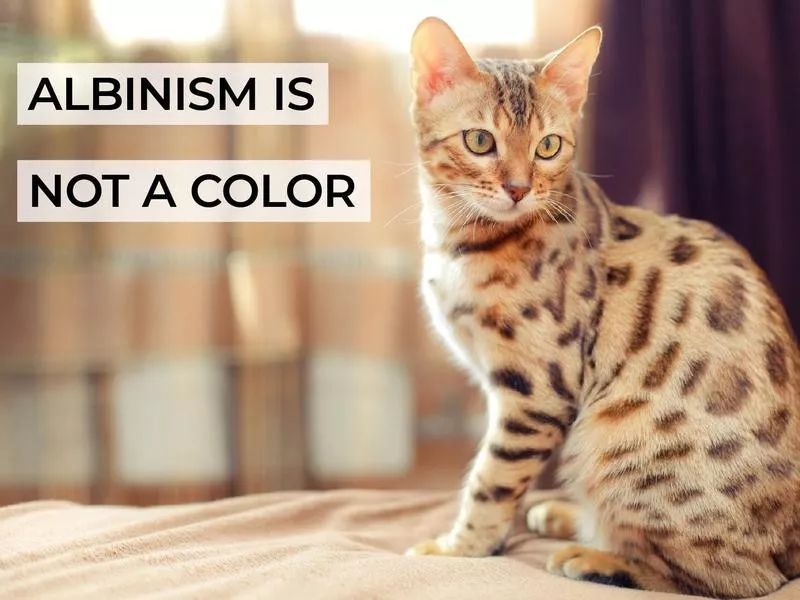
Getty Images
The lilac or blue eyes of an albino cat is not a color, though, because there isn’t any color if there is an absence of melanin.
It’s actually light reflecting the blood flow in the back of the retina.
Some Cats Have Darker Eyes

Less melanin results in cats with green eyes.
More melanin results in cats with brown (amber- or copper-colored) or yellow eyes.
Certain Cats Reflect Light Differently

Blue-eyed cats have low melanin also, but the lightness or deepness of the blue color is actually determined by the angle of refraction of the light in the back of their eyes.
They Can Have Two Different Colored Eyes

Cats can have two different colored eyes. This condition is called heterochromia iridis, which means “irises that are different colors.”
These cats are known as “odd-eyed cats.” Typically, one eye will be blue, and the other eye will be green, brown or yellow.
Their Eye Color Changes

The gene that causes a cat to have white fur on its body also causes odd eyes. When kittens are first born, their eyes are blue. At about seven weeks of age, a kitten’s eyes will start to change to their adult color. Sometimes they’ll stay blue, and sometimes the melanin causes a color change.
Sometimes the melanin doesn’t activate in one eye, which remains blue. The melanin causes the other eye to change to green, yellow or brown.
Tuxedo Cats Are Unique
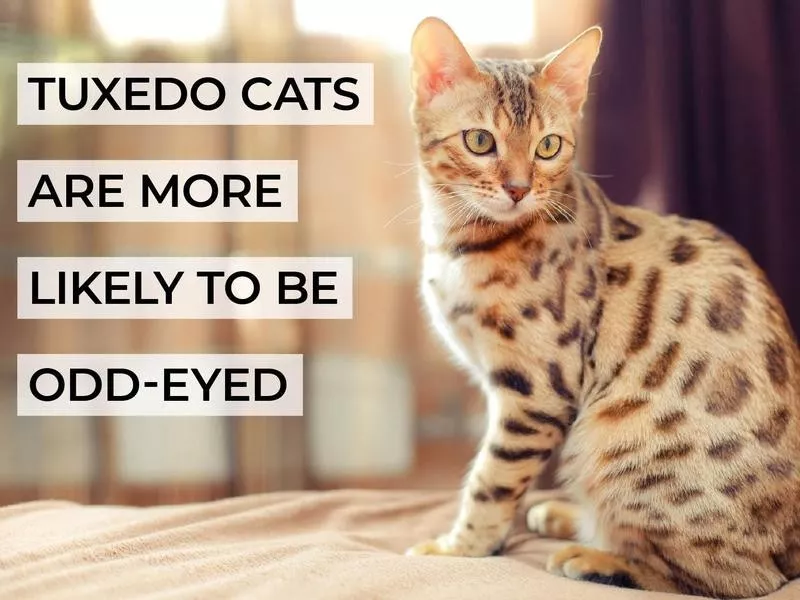
Odd eyes are most common in cats that have the dominant white or white spotting gene, such as tuxedo cats.
Tuxedo cats are so-called because they have patterns of black and white patches on their fur.
Odd-Eyed Cats Don’t Have Any Trouble Seeing
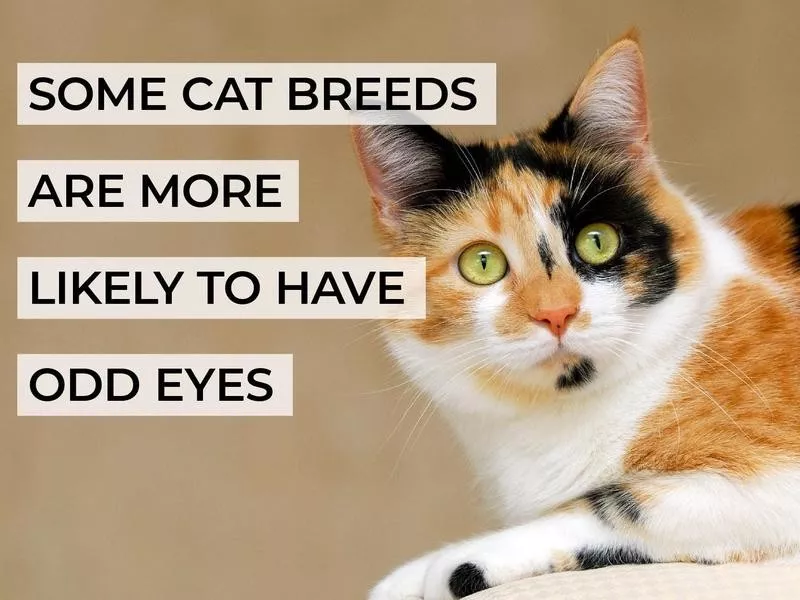
Breeds that commonly have odd eyes are Turkish Angoras, Persians, Sphynx Cats, Oriental Shorthair and Japanese Bobtail Cats.
Odd-eyed cats don’t have any trouble seeing.
Turkish Angora Cats Are a National Treasure

The country of Turkey considers Turkish Angora cats, which originate from Ankara in Turkey (formerly Angora) to be a national treasure. In 1971, the Ankara Zoo established a private breeding program to preserve the genetics of Angora cats with odd eyes.
In the 1950s, American servicemen discovered the unique cats and eventually, in 1962, the zoo allowed an odd-eyed white male and an amber-eyed white female to be used to establish a new breeding program in the U.S.
Some Cats Are Deaf

Cats with white fur are more prone to deafness.
Between 17 and 22 percent of white cats with eye colors other than blue are born deaf.
One Blue Eye Can Mean Deafness

If the cat has white fur and one blue eye, it’s 40 percent more likely that the cat will be born deaf.
So Does Two Blue Eyes
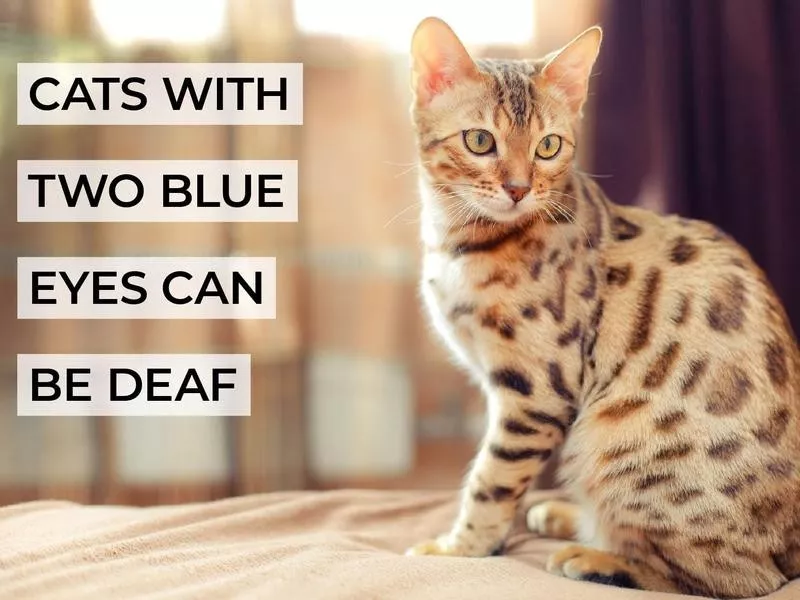
But it’s 65 to 85 percent likely that an all-white cat with two blue eyes will be deaf, even if they are deaf in only one ear.
Interestingly, if a white cat with one blue eye is deaf in only one ear, it will be deaf in the ear that is on the side of its blue eye.
Some Cats Have Multi-Colored Eyes

A cat can have two colors in the same eye! This is called partial heterochromia or dichroic eyes. Melanin of different levels can be found within the same eye, which can lead to a “pie slice” or a “halo” of a different color in one eye.
Not only that, but if both of a cat’s eyes are dichromatic, they may be a mirror image of each other. For cats who are bred to be show cats, this is considered a flaw, but many humans love the look.
Tabbies Are Dominant
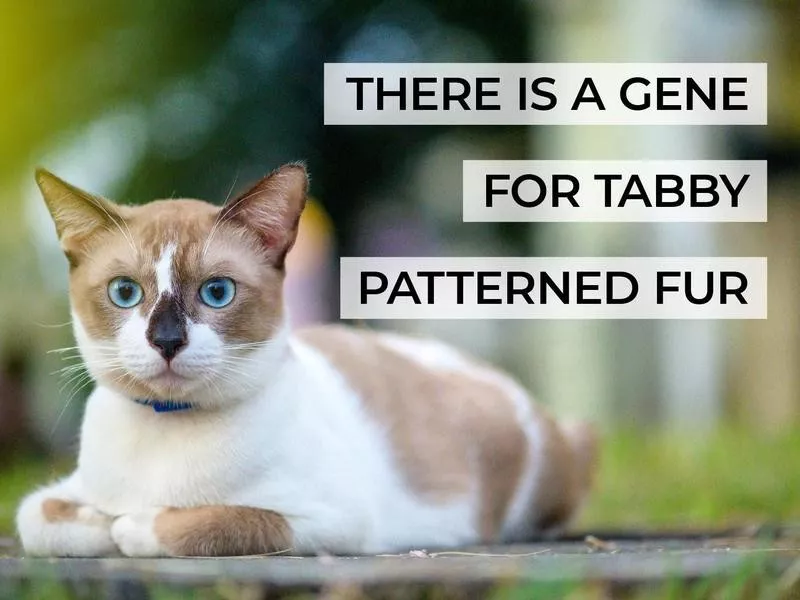
The dominant pattern on cat fur — not color — is tabby. Tabby cats have marbles, spots, swirls and bullseye patterns on their fur. Even a single hair of a tabby cat can have bands of different colors.
The tabby pattern is the result of the dominant pattern gene called the agouti gene and represented by the letter A. The recessive agouti gene is called non-agouti and is known as the letter aa.
Black Cats Have a Certain Genetic Make Up

The dominant color gene for black fur is known as B. Recessive genes for black fur are known as b and b’, which produce brown and reddish colors.
For a cat to be solid black, it must have the dominant black fur gene B and also carry the recessive non-agouti gene (aa), so that the tabby pattern doesn’t appear. Cats who have the dominant agouti gene (A) will be tabby.
Some Cats Are Stealth
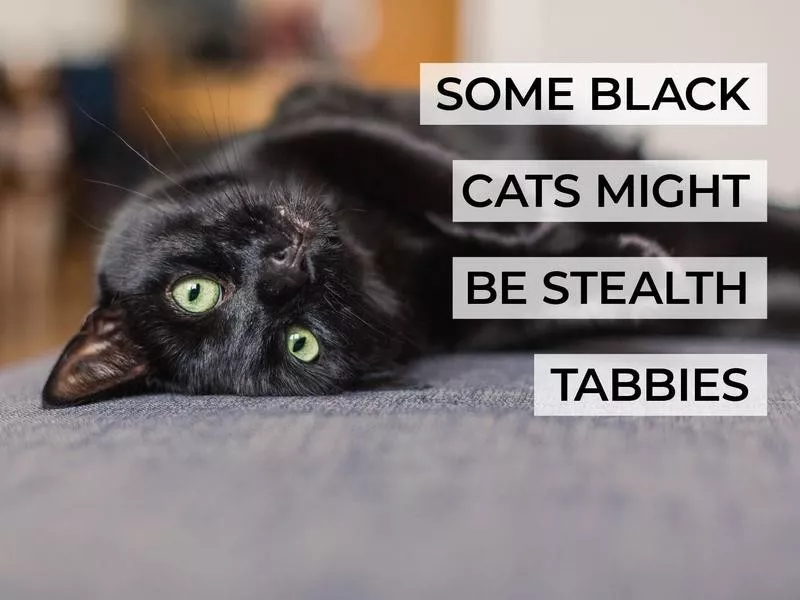
If a cat has the dominant black gene B but the tabby gene isn’t recessive, you might be able to see tabby stripes on your black cat, especially if they are sitting in sunlight.
Your black cat might be a stealth tabby!
Tabby Cats Are All Different
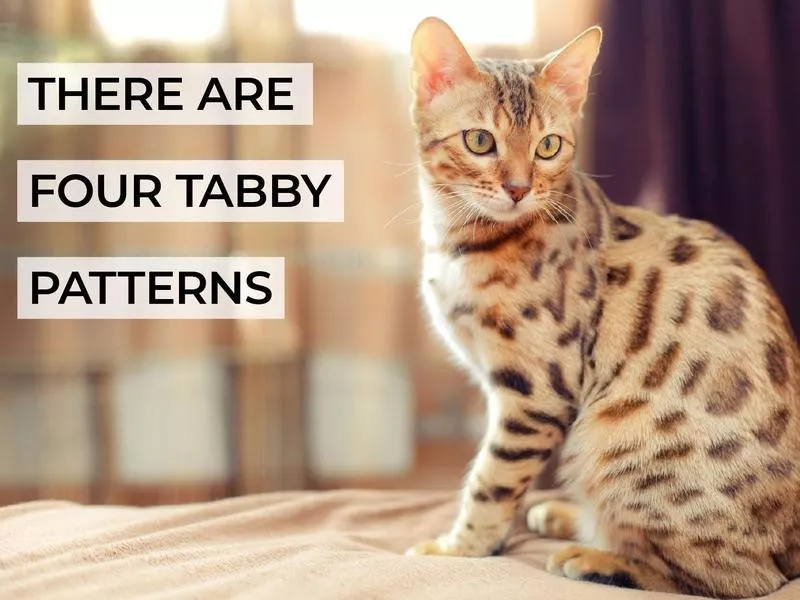
If you have a tabby cat in your life, look closely at their pattern. There are four recognized tabby patterns: mackerel, classic, spotted and ticked.
Mackerel tabbies are the most common pattern. This pattern resembles tiger stripes. Classic tabbies have wide stripes and swirls. Spotted tabbies are covered in random spots on their backs and sides. Ticked tabbies have stripes only on the legs, ears, tails and paws, but not on their body. Tabbies also often have an “M” shape on their foreheads.
Tortoiseshell Cats and Calico Cats Are Different

A cat with a tortoiseshell pattern has a coat with patches of orange, cream and brown on top of a predominantly black base cat. But calico cats have a base that is predominantly white.
That’s why all calico cats are tortoiseshell, but not all tortoiseshell cats are Calico.
Where the Ladies At?

A cat needs two X chromosomes to have three colors on their fur, which is what makes them either tortoiseshell or calico. Animals with a XX pair of chromosomes are female.
Male cats have an XY chromosome pair, so it is very rare for them to be calicos or tortoiseshells. Male cats that do have a tri-color fur pattern often have serious health problems.
Male Calico Cats Are Sterile

If a male cat has a tri-colored coat, which makes it calico or tortoiseshell, it would have to have an XXY gene combination.
The extra X causes Klinefelter’s Syndrome, which makes them sterile (unable to reproduce offspring).
Cats Are Good Luck!
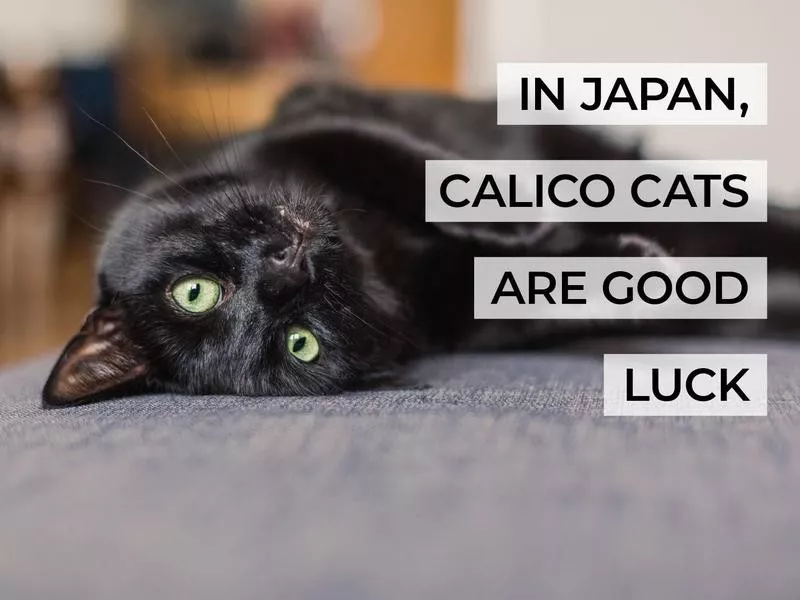
In Japan, figurines called maneki neko are in the shape of a cat holding up one paw.
They are often depicted as calico cats, and the colors of the cat’s fur represent different good fortunes, from happy marriage and love (red) to wealth and prosperity (gold). Black represents protection against evil.
Some Cats Are Deities

In 2007, a calico cat named Tama started hanging out at a train station in rural Wakayama prefecture in western Japan. In 2015, Tama died, and by then, the unofficial “stationmaster” was so loved that she was declared a Shinto deity and was laid to rest at a shrine for cats near the station.
The Wakayama station now has another stationmaster, a 5-year-old calico named Nitama.
Eye Color Has Little to Do With Coat Color
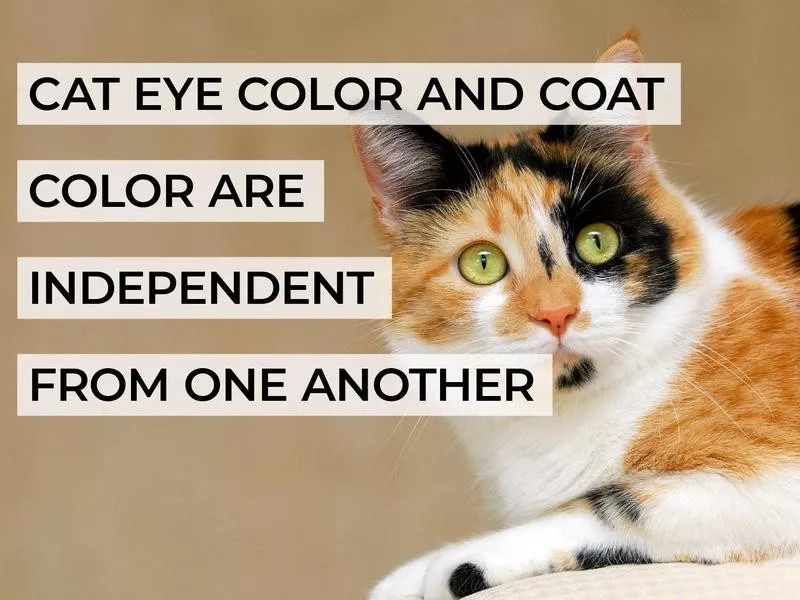
Generally speaking, knowing a cat’s eye color doesn’t tell you anything about coat color, and vice versa.
Only blue-eyed cats have a higher percentage of having fur of a predictable color, which is white.
Black Cats May Have Less Diseases
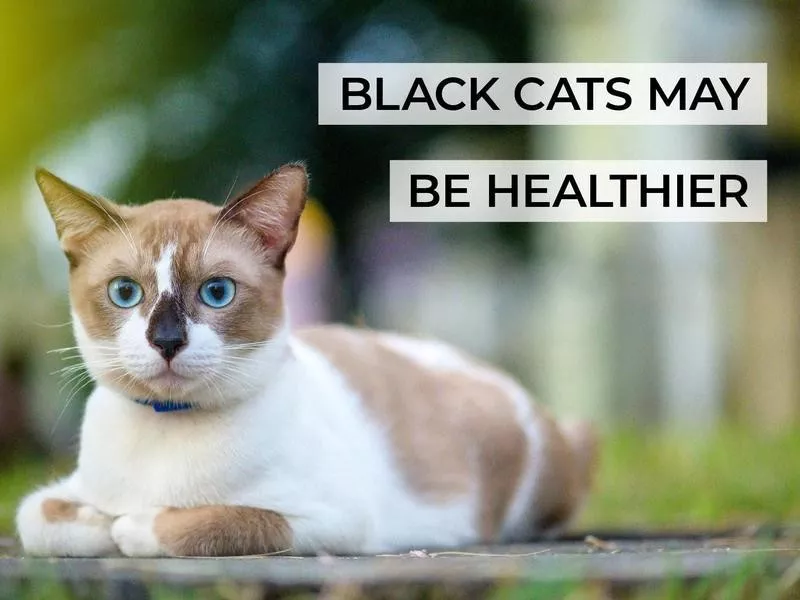
Black fur may have evolved separately in animal populations around the world, indicating that there may be a survival benefit to having dark fur. The mutations leading to a black coat are in the same gene family as those involved in some human diseases, which suggests that black cats may be more resistant to certain diseases.
While it is possible that black cats may be healthier, it may just be that they have the advantage of being able to hunt effectively at night. Of the 37 species of cat that exist, 11 can have black coats.
Three Eyelids Are the Norm
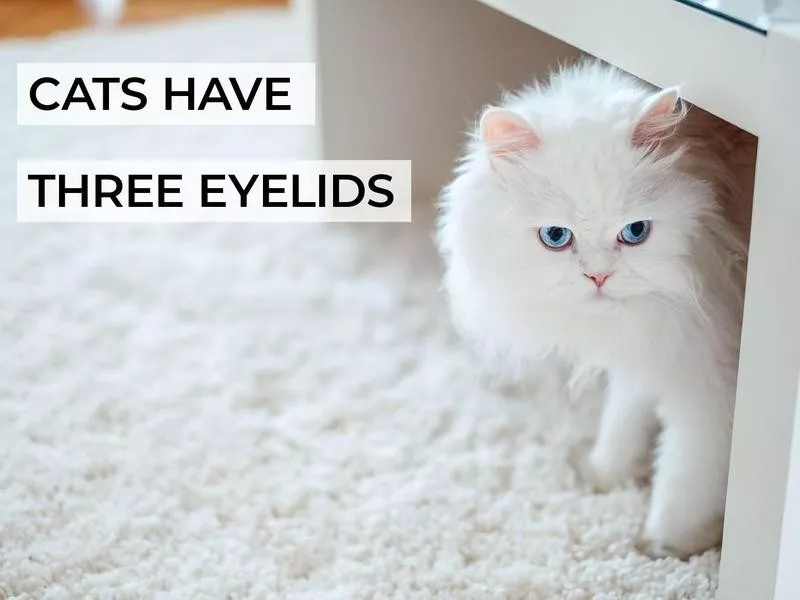
This doesn’t mean your cat looks like an alien with three eyes! The third eyelid is a membrane, called the nictitating membrane. It closes from the sides of the eyes.
It acts like a windshield wiper blade, moving from side to side and removing dust, dirt and debris from the eyelid and distributing eye moisture.
Black Cats Have Had All Types of Reputations

Black cats have been unfairly saddled with a reputation for being bad luck, being associated with the shadows, evil doings and sorcery. Despite that, there have been many black cats loved by society over the years, including Felix the Cat and Sylvester the tuxedo kitty, who can’t stop chasing Tweety Bird.
Some black cats were even revered in some parts of the world. In Egypt, one goddess, named Bastet, was part cat and part woman. She was one of the most important deities, and she granted good fortune for people who housed and protected cats. A black cat on a pirate ship was also considered good luck, especially if it stayed on board. If it walked off again, the ship was foretold to sink.
Cat’s Can Inherit Fortune
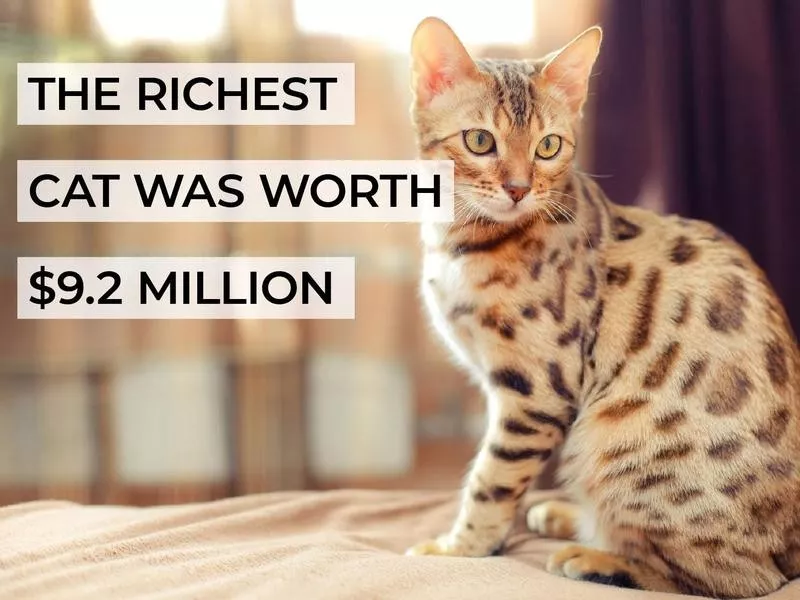
It’s a thing. Blackie, the world’s richest (and luckiest) cat, inherited his owner’s fortune in May 1988 after his owner died and refused to recognize his family in his will.
Most of the millionaire’s fortune went to three cat charities with the requirement of looking after his beloved friend.